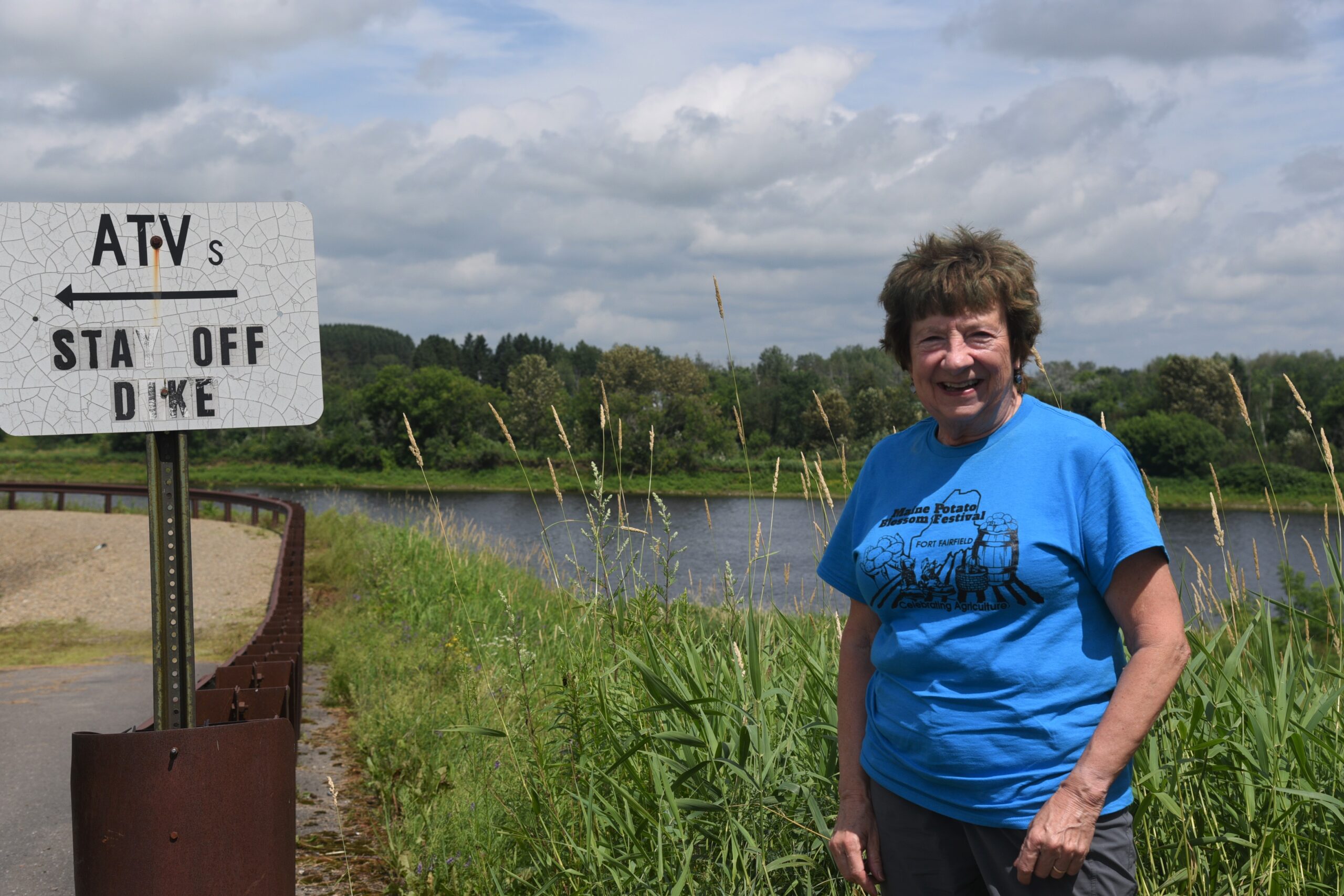
FORT FAIRFIELD, Maine — Patty Reynolds and Lynn Soucy wanted to provide a new event for the Potato Blossom Festival that had a low bar for participation.
Five walks were held during the Potato Blossom Festival around the historic sites and pathways of Fort Fairfield. Each walk, except for Tuesday’s, began at the Fort Fairfield Community Center at around 7 a.m. during the Potato Blossom Festival.
“We shared the story of Fort Fairfield,” Soucy said while sitting in the shade of her porch.
On July 10, Reynolds and Soucy walked along Main Street with a small crowd, talking about the town’s history, stopping in front of the historical plaques put up by the Frontier Heritage Historical Society, and one of the Boy Scout troops, in Fort Fairfield around 20 years ago.
The plaques had information about events that happened in its location around 100 to 150 years ago, Soucy said.
From 18 to 23 participants showed up for the “Walk with Patty and Lynn,” with the exception of Tuesday, which was rainy.
One of the locations they stopped at was in front of the Fort Fairfield Public Library, with the plaque there detailing that the library was built in 1913 with a $10,000 gift from Andrew Carnegie. The Fort Fairfield Public Library is one of 17 Carnegie Libraries in Maine.
Other locations were at the Collins House and where the old starch factory used to be during the walking tour.
The next day on July 11, the walking tour began in Riverside Cemetery to discuss the notable people who lived and contributed to Fort Fairfield’s story.
One of the notable people was John Reed, who was a governor of Maine during the 1960s and grew up as a farmer in Fort Fairfield. His house was accidentally on the other side of Maine’s state line after the border was drawn with Canada.
“[John Reed] was an American who thought he had lived in the states all along, and when [the Maine Legislature] drew the line he was on the other side of it,” Soucy said.
On July 12, the walking tour went out to the Fort Fairfield dike and discussed the Great Flood of 1994 that became the reason the dike was built and what it has done for the town since then. The theme was history that even some of the walkers could still remember.
On July 13, the pair guided the group across the Aroostook River Bridge and around the Pavillion then up to the Catholic Cemetery and the old Riverside Cemetery for a walking trip through them and back to the Community Center.
For the final day on July 14, the walking tour went through the streets and trails around Fort Fairfield with one trail that joins High Street to Courier Street that goes around the school buildings and back into town.
“There are lots of facts that people aren’t aware of,” Lynn said. “Fort Fairfield has a deep, rich history as a lumbering town and as an agricultural town.”







